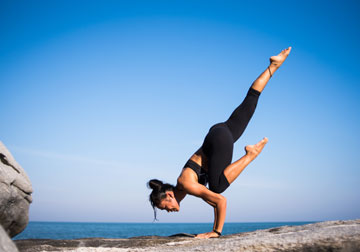5 Simple ways to measure your fitness level
What is your fitness score?
Health and fitness are elements that everyone aspires for. It is a different thing however what we eat, drink, or lifestyle we follow. But when it comes to fitness level, we get overwhelmed with the thought of following an exercise regime, a Healthy Diet, and other fancy words like cardio fitness, endurance, muscular strength, etc.
Though in the previous blog we have discussed in detail about what fitness is, why it is crucial, and why medical fitness is important when it comes to choosing what is best for your health.
How to measure fitness?
Is it having a broad body build, big biceps, tight abs, lifting heavy weights, or is it the overall well being of the body?

In the simplest possible terms “Fitness is the ability to perform your daily tasks without experiencing undue fatigue”. You might have an idea about your fitness level, but knowing the specifics can help you set realistic fitness goals and monitor your progress.
Gather your tools and get ready for the simple assessment. It would be a good idea to note your score at each step and finally, you will come to know what you have been doing or what you should do to get what is best for your health.
Simple ways to measure fitness:
1. Resting Heart Rate – To Assess Aerobic Fitness
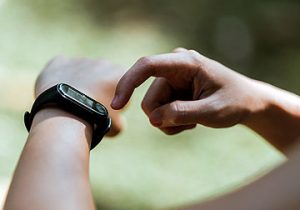
This is the simple yet effective way to assess your fitness level. Your resting heart rate (RHR) represents the number of times your heart beats each minute when you are at rest. Since a strong cardiovascular system allows your heart to pump more blood with every beat, a lower RHR tends to correspond with higher aerobic fitness.
Counting the number of beats of your resting heart rate (RHR) is a useful way of indicating your fitness progress. It should reduce as your aerobic fitness improves.
How to measure: To measure your RHR, you can use a heart rate monitoring device or place two fingers either on your neck, just below your jawline (carotid artery), or on your wrist (radial artery), and then count the number of beats you feel in 60 seconds. You should count the first beat as ‘zero’. It is often thought that the best time to take our RHR is first thing in the morning.
Your resting heart rate is a useful marker of your fitness progress, as it will drop as you get fitter.
The scale of this exercise test:
60 or less = Good
61 to 80 = Average
81 to 100 = High, but still considered acceptable
101 or more = Abnormally high (not good!)
2. Cooper Test – 12-Minute Walk/Run – To Assess Cardio Capacity
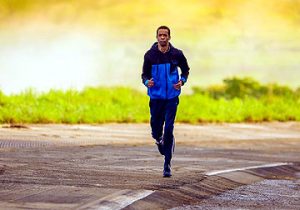
This is one of the most popular method to measure your fitness level. This method was invented in 1960 by Kenneth Cooper – the man credited for inventing ‘aerobics’. The method is still widely used to measure cardiovascular fitness. The test is mainly designed for running exercise – but you can walk it if necessary.
The important thing is to maintain a steady pace, rather than go fast for three minutes and then crawl for the remaining nine. Cooper’s results are based on a mixed-gender sample of thousands of people.
Results of this exercise
1.46 miles (2.35 km) or more = Excellent
1.33 to 1.45 miles (2.14 to 2.33 km) = Good
1.32 to 1.26 miles (2.12 to 2.03 km) = Fair
1.25 miles (2.01 km) or less = Poor
3. Push-Ups
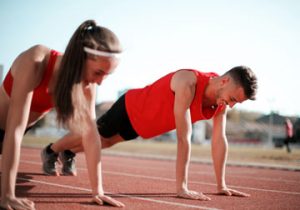
Push-ups are a simple yet effective indicator of muscle endurance. It is used to assess upper body muscular endurance. It challenges chest, shoulder, and upper arm muscles and requires good core stability to perform repetitions in a specific time. Push-ups are a great indicator of your upper body strength and the progress of your muscle-building exercise.
How to do this exercise
Assume a push-up position (if you can’t do any push-ups, then assume a modified position with your knees and lower legs on the floor). Each repetition must be executed with good technique: the body should remain in a straight line, the head should be in line with the spine, and the arms should bend to at least 90 degrees.
Results of this exercise technique:
30 or more for men / 25 or more for women = Excellent
25 to 29 for men / 20 to 24 for women = Good
20 to 24 for men / 15 to 19 for women = Not bad
19 or less for men / 14 or less for women = Needs work!
4. Flexibility: Sit-and-reach test
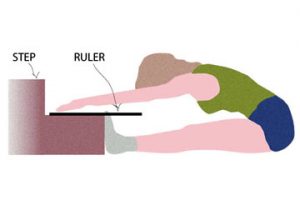
The sit-and-reach test is a simple way to assess the flexibility of the back of your legs, your hips, and your lower back.
Here’s how:
- Sit in front of the staircase facing the last step, with the foot stretched out.
- The sole of the feet are placed against the last step of the staircase. Both knees should be locked and pressed flat to the floor.
- Place a ruler on the first step
- Slowly reach forward as far as you can, exhaling as you reach and holding the position for at least 1 second.
- Note the distance you reached.
- Repeat the test two more times.
- Record the best of the three reaches.
See, If you can reach ahead of your toes. For men more than 2.5” ahead of the toes is ideal. For women, it is more than 4”.
5. Waist-To-Hip Ratio – To Assess Body Fat Distribution
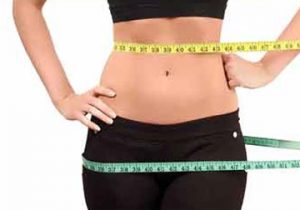
Waist-to-hip ratio (WHR) is an assessment of the proportion of fat stored around the waist compared to the hip girth. Carrying excess fat around the stomach (apple shape) is worse for your health than having a pear shape (carrying excess baggage around your hips or thighs), as it is associated with heart disease and diabetes.
How to measure: Measure the circumference of your hips at the widest part of your buttocks with the tape held firm but not pulling. Measure the circumference of your waist at the narrowest point. To determine the ratio, divide your waist measurement by your hip measurement.
Results of this exercise
For women, a healthy waist-to-hip ratio is less than 0.8. A healthy waist-to-hip ratio for men is less than 0.9.
Tools and outfit required:
- Comfortable attire / tracksuit. ( View Tracksuit options on Amazon
)
- Comfortable running shoes. ( View Running Shoes options on Amazon
)
- A fitness watch, or a stopwatch or a watch that can measure seconds ( View Fitness Stopwatch options on Amazon
)
- Cloth measuring tape ( View Cloth Measuring Tape options on Amazon
)
- A scale, a pencil/pen or a digital tool to record your score.
Someone to help you record your scores and count repetitions.
Conclusion
Assess yourself on these parameters and you will have a fair idea about your fitness score. A fitness score helps keep track of your health and well being. It not only works as an early indicator but also helps you know your body age. This is the first step to define the workout and steps required to make your body work in harmony and know what is best for your health.


